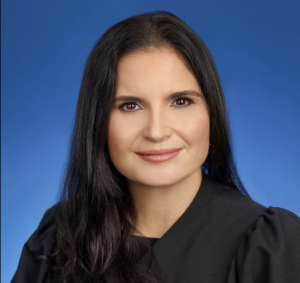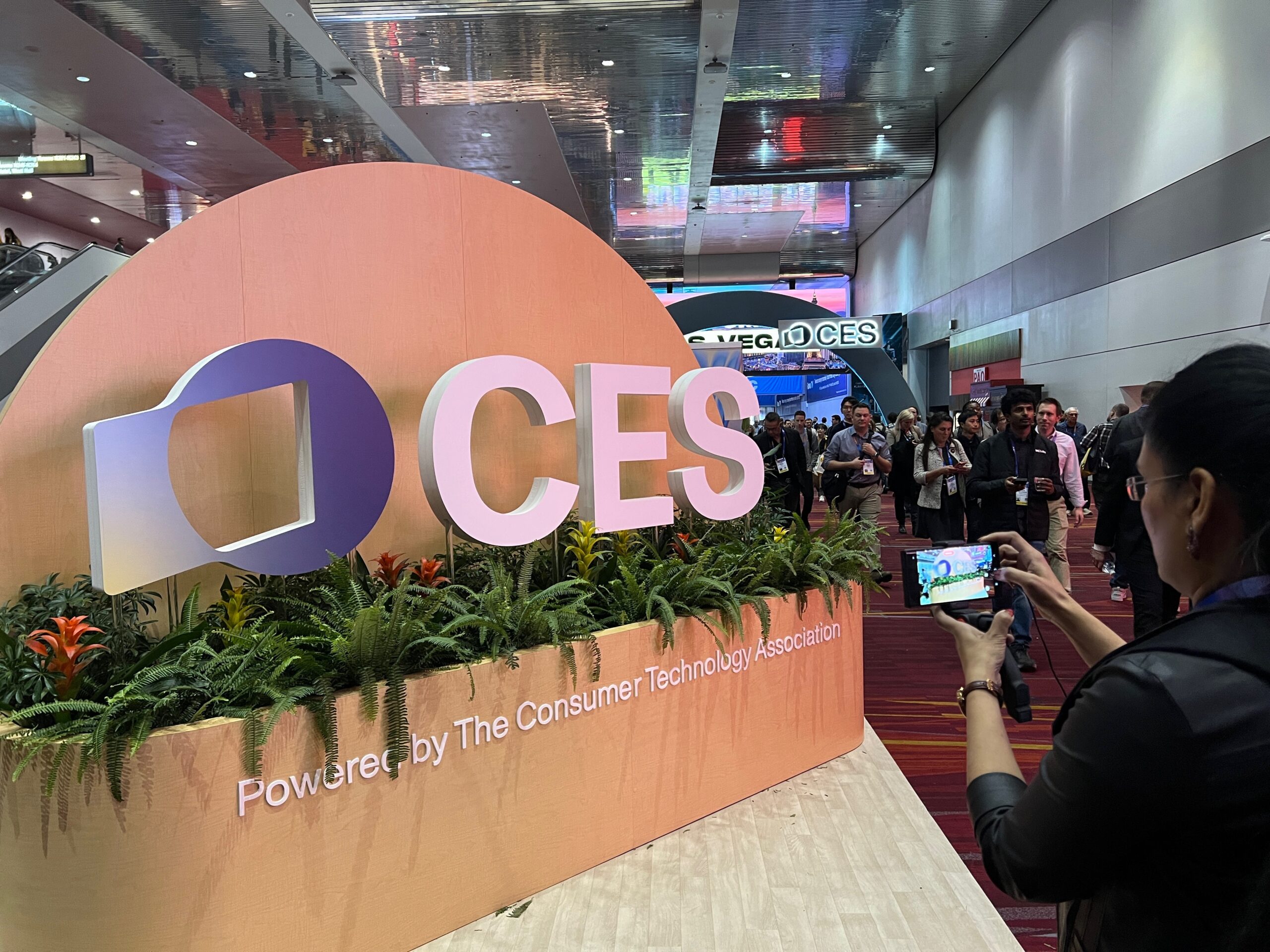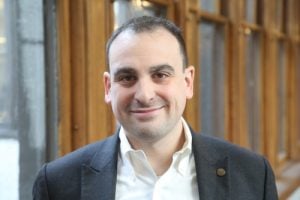Firm |
Date
Matched |
Minimum
Hours |
Payout
Date |
Milbank
Class
of
2024:
$15K
/
$6K
(prorated)
Class
of
2016:
$115K
/
$25K |
FIRST
MOVER
November
11,
2024 |
None |
On
or
before
December
31,
2024 |
Vartabedian
Hester
&
Haynes
Class
of
2024:
$15K
/
$6K
Class
of
2016:
$115K
/
$25K |
November
13,
2024 |
1800
hours |
On
or
before
December
31,
2024 |
Cravath
Class
of
2024:
$15K
/
$6K
(prorated)
Class
of
2017:
$115K
/
$25K |
November
19,
2024 |
None |
December
13,
2024 |
Paul
Hastings
Class
of
2023:
$20K
/
$6K
Class
of
2017+:
$115K
/
$25K |
November
20,
2024 |
2000
hours |
February
14,
2025 |
Ropes
&
Gray
Class
of
2024:
$15K
/
$6K
(prorated)
Class
of
2016+:
$130K
/
$25K |
November
20,
2024 |
1900
creditable
hours
(increased
bonuses
for
associates
who
annualized
above
hourly
target) |
December
24,
2024 |
Fried
Frank
Class
of
2024:
$15K
/
$6K
(prorated)
Class
of
2017+:
$115K
/
$25K |
November
20,
2024 |
1850
hours
for
special
bonus
(including
billable,
pro
bono,
qualified
nonbillable,
and
firm
matter
hours);
associates
eligible
for
“premium”
bonus
ranging
from
$3K
to
$34.5K |
On
or
before
December
31,
2024 |
McDermott
Will
&
Emery
Class
of
2024:
$15K
/
$6K
(prorated)
Class
of
2017+:
$115K
/
$25K |
November
20,
2024 |
2000
hours
(merit
bonuses
available
for
eligible
associates;
“two-thirds”
of
associates
will
see
bonuses
above
market) |
December
27,
2024 |
Cleary
Class
of
2024:
$15K
/
$6K
(prorated)
Class
of
2017+:
$115K
/
$25K |
November
21,
2024 |
None |
December
20,
2024 |
Paul
Weiss
Class
of
2024:
$15K
/
$6K
(prorated)
Class
of
2017+:
$115K
/
$25K |
November
21,
2024 |
None |
December
20,
2024 |
Dechert
Class
of
2023:
$20K
/
$6K
Class
of
2017+:
$115K
/
$25K |
November
21,
2024 |
1950
hours
(client
billable,
pro
bono,
firm
as
client,
maximum
of
50
community
hours);
associates
who
exceeded
hours
expectations
eligible
to
receive
an
“extraordinary”
bonus
(i.e.,
2200
hours
=
addt’l
30%;
2400+
hours
=
addt’l
40%);
“enhanced”
bonuses
up
to
130%
above
market
available
on
top
of
“extraordinary”
bonus
for
those
with
high
billable
hours |
By
or
before
end
of
January
2025 |
O’Melveny
Class
of
2024:
$6K
(prorated)
Class
of
2017+:
$115K
/
$25K |
November
21,
2024 |
None |
Undisclosed |
Holwell
Shuster
Class
of
2024:
$15K
/
$6K
(prorated)
Class
of
2017+:
$115K
/
$25K |
November
21,
2024 |
None |
On
or
before
December
31,
2024 |
Davis
Polk
Class
of
2024:
$15K
/
$6K
(prorated)
Class
of
2017+:
$115K
/
$25K |
November
22,
2024 |
None |
December
27,
2024 |
Weil
Gotshal
Class
of
2024:
$15K
/
$6K
(prorated)
Class
of
2017+:
$115K
/
$25K |
November
22,
2024 |
None |
January
31,
2025 |
White
&
Case
Class
of
2024:
$15K
/
$6K
(prorated)
Class
of
2017:
$115K
/
$25K |
November
22,
2024 |
Eligibility
criteria
detailed
in
separate
memo |
February
14,
2025 |
Skadden
Class
of
2024:
$15K
/
$6K
(prorated)
Class
of
2017+:
$115K
or
$125K
/
$25K |
November
22,
2024 |
1800
“productive
hours”
(including
unlimited
pro
bono
time
and
up
to
150
hours
of
productive
non-billable
work) |
December
13,
2024 |
Cadwalader
Class
of
2024:
$15K
/
$6K
(prorated)
Class
of
2016:
$115K
/
$25K |
November
22,
2024 |
Additional
bonuses
“equal
to
120%
of
[market
bonuses]”
for
high
billers
with
2200
hours
or
more |
By
or
before
end
of
February
2025 |
Proskauer
Class
of
2024:
$15K
/
$6K
(prorated)
Class
of
2016:
$115K
/
$25K |
November
22,
2024 |
None |
On
or
before
December
24,
2024 |
Schulte
Roth
&
Zabel
Class
of
2024:
$15K
/
$6K
(prorated)
Class
of
2017+:
$115K
/
$25K |
November
22,
2024 |
2000
hours;
step-up
bonuses
from
$3K
to
$51.75K
for
associates
who
have
made
“extraordinary
contributions”
to
the
firm) |
January
27,
2025 |
Covington
Class
of
2024:
$15K
/
$6K
(prorated)
Class
of
2017+:
$115K
/
$25K |
November
22,
2024 |
2000
hours;
(associates
will
see
a
10%
bonus
increase
at
2200
hours,
and
another
10%
bonus
increase
2400
hours) |
January
2025 |
Willkie
Farr
Class
of
2024:
$15K
/
$6K
(prorated)
Class
of
2017+:
$115K
/
$25K |
November
22,
2024 |
None |
December
31,
2024 |
Akin
Class
of
2024:
$15K
/
$6K
(prorated)
Class
of
2017+:
$115K
/
$25K |
November
22,
2024 |
1950
hours
(including
pro
bono
hours,
general
counsel
hours,
business
development
hours,
and
up
to
100
hours
of
time
spent
on
recruiting,
diversity
&
inclusion,
and/or
innovation
activities);
associates
with
“exceptional”
performance
will
receive
larger
bonuses |
February
2025 |
Sidley
Class
of
2023:
$20K
/
$6K
Class
of
2016:
$115K
/
$25K |
November
25,
2024 |
2000
hours
required
for
base
bonuses;
associates
with
“higher
productivity
and/or
exceptional
performance”
will
receive
additional
bonuses,
up
to
“more
than
50%
above
base
bonus” |
Prior
to
December
31,
2024 |
Baker
Botts
Class
of
2023:
$20K
/
$6K
Class
of
2017+:
$115K
/
$25K |
November
25,
2024 |
2000
hours
(1800
client
billable
hours
and
200
non-client
billable
hours,
including
pro
bono,
business
development,
etc.);
“enhanced”
bonuses
available
for
“exceptional”
performance;
special
bonuses
reportedly
require
2000
client
billable
hours
for
eligibility |
Undisclosed |
A&O
Shearman
Class
of
2024:
$15K
/
$6K
(prorated)
Class
of
2017+:
$115K
/
$25K |
November
25,
2024 |
2000
hours
(including
a
minimum
of
25
pro
bono
hours
and
up
to
100
investment
hours
(e.g.,
DEI/mental
health;
personal
development/training;
community
involvement;
management
&
talent
development;
knowledge
development;
origination,
client
relationships,
business
development;
and
market
innovation
group)) |
January
31,
2025 |
Katten
Muchin
Class
of
2023:
$20K
/
$6K
Class
of
2017+:
$115K
/
$25K |
November
25,
2024 |
2000
hours
(2100
hours
for
$22K-$126.5K;
2200
hours
for
$24K-$138K;
2300
hours
for
$26.5K-$149.5K;
2400
hours
for
$31K-$172.5K);
additional
“superstar”
bonuses
available |
February
3,
2025 |
Vinson
&
Elkins
Class
of
2024:
$15K
/
$6K
(prorated)
Class
of
2017+:
$115K
/
$25K |
November
25,
2024 |
Based
on
hours
and
good
standing;
“supplemental
bonuses”
available
for
associates
who
had
an
“exemplary
year” |
On
or
about
January
31,
2025 |
Debevoise
Class
of
2024:
$15K
/
$6K
(prorated)
Class
of
2017+:
$115K
/
$25K |
November
26,
2024 |
None |
Undisclosed |
Clifford
Chance
Class
of
2024:
$15K
/
$6K
(prorated)
Class
of
2017+:
$115K
/
$25K |
November
26,
2024 |
None
(based
on
overall
performance,
quality
of
work,
contributions
to
firm,
teamwork,
and
pro
bono) |
January
15,
2025 |
Mayer
Brown
Class
of
2024:
$15K
/
$6K
(prorated)
Class
of
2017+:
$115K
/
$25K |
November
26,
2024 |
2000
hours;
associates
eligible
for
addt’l
bonuses
based
on
performance |
February
28,
2025 |
Gibson
Dunn
Class
of
2024:
$15K
/
$6K
(prorated)
Class
of
2017:
$115K
/
$25K |
November
27,
2024 |
Undisclosed |
Undisclosed |
Seward
&
Kissel
Class
of
2023:
$20K
/
$6K
Class
of
2017+:
$115K
/
$25K |
November
27,
2024 |
2000
hours
(1850
billable
hours
and
150
qualified
non-billable
hours);
2200
hours
for
special
bonus
(1850
billable
hours
and
150
qualified
non-billable
hours;
associates
who
“substantially”
exceed
the
eligibility
requirements
for
special
bonuses
may
receive
an
“increased”
special
bonus) |
First
quarter
of
2025 |
Fish
&
Richardson
Entry-Level:
$15K
/
$6K
(prorated)
A7:
$115K
/
$25K |
November
27,
2024 |
2100
hours
(including
up
to
200
pro
bono/DEI/pitch
hours)
or
strongest
reviews
based
on
quality
of
work |
December
26,
2024 |
Morgan
Lewis
Class
of
2023:
$20K
/
$6K
Class
of
2017+:
$115K
/
$25K |
November
27,
2024 |
1900+
hours
(20
of
which
must
be
pro
bono
hours) |
January
31,
2025 |
Wilkinson
Stekloff
Class
of
2024:
$22.5K
/
$6K
Class
of
2017:
$172.5K
/
$25K |
December
3,
2024 |
None |
By
December
13,
2024 |
Norton
Rose
Fulbright
Class
of
2024:
$15K
/
$6K
(prorated)
Class
of
2017+:
$115K
/
$25K |
December
3,
2024 |
1900
hours
(including
50
FIT
hours)
for
special
bonus
eligibility |
January
31,
2025 |
Kramer
Levin
Class
of
2024:
$15K
/
$6K
(prorated)
Class
of
2017+:
$115K
/
$25K |
December
4,
2024 |
Eligible
associates
in
good
standing
will
receive
bonuses |
February
14,
2025 |
Cahill
Class
of
2024:
$15K
/
$7.5K
(prorated)
Class
of
2016:
$115K
/
$40K |
December
5,
2024 |
Select
associates
in
Classes
of
2017-2020
who
have
demonstrated
“extraordinary”
performance
eligible
for
a
“super
bonus”
up
to
$200K
(based
on
performance
and
seniority)
in
lieu
of
special
bonus |
Second
half
of
January
2025 |
Ross
Aronstam
Class
of
2022:
$30K
/
$10K
Class
of
2016:
$115K
/
$25K |
December
5,
2024 |
None |
December
15,
2024 |
AZA
Class
of
2024:
$15K
/
$6K
Class
of
2021:
$57.5K
/
$15K |
December
6,
2024 |
None
(based
on
overall
performance;
bonuses
for
elder
class
years
are
individualized) |
December
13,
2024 |
Perkins
Coie
Class
of
2024:
$15K
(prorated)
/
$6K
Class
of
2017+:
$115K
/
$25K |
December
6,
2024
December
27,
2024
(special
bonuses) |
Undisclosed;
associates
report
no
special
bonuses
are
being
awarded;
firm
reversed
course
on
special
bonuses
after
weeks
had
passed |
Undisclosed |
Boies
Schiller
Flexner
Class
of
2024:
$15K
/
$6K
(prorated)
Class
of
2017+:
$115K
/
$25K |
December
10,
2024 |
2000
hours
for
associates
on
the
“market”
system;
95%
of
associates
received
bonuses
as
high
as,
and
in
most
cases
higher
than
market
system
bonuses;
several
associates
received
bonuses
of
$300K+,
while
others
received
bonuses
of
$1M+ |
Week
of
December
9,
2024 |
Winston
&
Strawn
Class
of
2024:
$15K
/
$6K
(prorated)
Class
of
2017+:
$115K
/
$25K |
December
10,
2024 |
2000
hours
(additional
bonus
money
for
associates
who
“substantially
exceed”
productivity
goals);
for
special
bonus,
associates
who
meet
or
exceed
their
hours
will
receive
100%;
associates
who
meet
75%
or
more
of
their
hours
will
receive
75%;
associates
between
50-74%
of
their
hours
will
receive
50%;
associates
who
are
under
50%
of
their
hours
will
receive
0% |
End
of
January
2025 |
Sullvan
&
Cromwell
Class
of
2024:
$15K
/
$6K
(prorated)
Class
of
2017+:
$115K
/
$25K |
December
11,
2024 |
Undisclosed |
December
23,
2024 |
Freshfields
Class
of
2024:
$15K
/
$6K
(prorated)
Class
of
2017+:
$115K
/
$25K |
December
11,
2024 |
Undisclosed |
Undisclosed |
Linklaters
Class
of
2024:
$15K
/
$6K
(prorated)
Class
of
2017+:
$115K
/
$25K |
December
12,
2024 |
1900
hours
(including
unlimited
pro
bono,
up
to
400
hours
of
marketing,
and
other
work);
special
bonuses
awarded
to
associates
with
“higher
productivity”;
the
firm
is
reportedly
requiring
1650
client
billable
hours
for
special
bonus
eligibility |
December
31,
2024 |
Pillsbury
Fall
Hires:
$15K
/
$6K
(prorated)
SA
2/Counsel:
$115K
/
$25K |
December
12,
2024 |
1700
client/2000
creditable
hours
for
base
bonus;
1900
client/2200
creditable
hours
for
Super
Bonus
1
($20K-$25K,
by
class
year);
2100
client/2400
creditable
hours
for
Super
Bonus
2
($30K
all
class
years);
market
special
bonuses
not
included |
Undisclosed |
Selendy
Gay
Class
of
2024:
$17.25K
/
$6K
(prorated)
Class
of
2017+:
$132.25K
/
$25K |
December
12,
2024 |
None
(some
associates
will
receive
even
more
bonus
money
based
on
performance,
hours,
and
firm
citizenship;
some
associates
received
bonuses
more
than
50%
above
market) |
December
13,
2024 |
Axinn
Class
of
2024:
$15K
/
$6K
(prorated)
Class
of
2017+:
$115K
/
$25K |
December
12,
2024 |
2000
hours;
“extraordinary”
bonuses
available
to
associates
who
surpassed
their
billable
hours
threshold |
By
December
20,
2024 |
Gjerset
&
Lorenz
Class
of
2024:
$15K
Class
of
2017:
$115K |
December
12,
2024 |
1900
hours
for
base
bonus;
2000
hours
for
$20K-$130K
bonus;
2100
hours
for
$28K-$150K
bonus;
2200
hours
for
$35K-$165K
bonus;
maximum
potential
bonuses
of
$55K-$330K;
additional
bonuses
to
be
paid
out
over
the
next
four
quarters,
with
the
first
installment
on
March
31,
2025 |
Undisclosed |
Elsberg
Baker
&
Maruri
Class
of
2024:
$26.25K
/
$6K
Class
of
2017+:
$201.25K
/
$25K |
December
12,
2024 |
Undisclosed |
Undisclosed |
Rolnick
Kramer
Sadighi
Class
of
2024:
$15K
/
$6K
Class
of
2017+:
$115K
/
$25K |
December
12,
2024 |
Undisclosed;
the
firm
reportedly
awarded
bonuses
ranging
up
to
150%
over
the
prevailing
market
rate
to
associates |
Undisclosed |
Bursor
&
Fisher
Class
of
2023:
$50K+
Class
of
2020+:
$400K+ |
December
12,
2024 |
Undisclosed;
bonuses
are
based
on
business
origination
and
revenue;
highest
bonus
awarded
was
$725K |
Undisclosed |
Cohen
Ziffer
Class
of
2023:
$20K
Class
of
2017+:
$115K |
December
13,
2024 |
Undisclosed;
“in
exceptional
circumstances,”
associates
may
receive
higher
bonuses
“based
on
individual
performance” |
December
13,
2024 |
Quinn
Emanuel
Class
of
2024:
$15K
/
$6K
Class
of
2017+:
$115K
/
$25K |
December
13,
2024 |
2000-2099
hours
for
$10K-$76.6K;
2100-2399
hours
for
base
bonus;
2400-2699
hours
for
$18K-$138K;
2700+
hours
for
$20.25K-$155.25K |
Week
of
December
16,
2024 |
McKool
Smith
Class
of
2024:
$15K
(prorated)
Class
of
2017+:
$115K |
December
13,
2024 |
Undisclosed;
high
billers
will
receive
additional
bonus
money,
with
some
exceeding
the
Milbank
scale
by
more
than
35%;
firm
previously
awarded
summer
bonuses
based
on
hours
(1900
hours
for
$2.5K;
1900-2199
hours
for
$7.5K;
2200-2299
hours
for
$10K;
2300-2399
hours
for
$15K;
2400-2599
hours
for
$20K;
2600+
hours
for
$30K) |
Undisclosed |
Susman
Godfrey
Class
of
2022:
$110K
(median)
Class
of
2015:
$260K
(median) |
December
17,
2024 |
None |
Undisclosed |
Yetter
Coleman
Class
of
2024:
$15K
/
$6K
(prorated)
Class
of
2017+:
$115K
/
$25K |
December
17,
2024 |
Undisclosed;
“outstanding”
performances
will
be
rewarded
with
“even
higher”
bonus
amounts |
December
20,
2024 |
Hogan
Lovells
Class
of
2023:
$20K
/
$6K
Class
of
2017+:
$115K
/
$25K |
December
17,
2024
December
29,
2024
(special
bonuses) |
2000
hours
(including
up
to
150
pro
bono
hours
until
associates
meet
1850
hours,
then
unlimited
pro
bono
hours,
and
including
up
to
50
D&I
hours,
if
they
have
billed
at
least
1800
hours);
additional
bonuses
available
for
those
who
exceed
hours
minimums;
associates
report
no
special
bonuses
are
being
awarded;
firm
reversed
course
on
special
bonuses
after
weeks
had
passed |
End
of
December
2024
for
year-end
bonuses;
end
of
February
2025
for
special
bonuses |
Orrick
Associate
Year
1:
$20K
/
$6K
Senior
Associate
Year
2+:
$115K
/
$25K |
December
18,
2024 |
Undisclosed |
December
31,
2024
(special
bonuses);
Mid-February
2025
(merit
bonuses) |
Hueston
Hennigan
Class
of
2023:
$20K
/
$6K
Class
of
2017+:
$115K
/
$25K |
December
18,
2024 |
Based
on
class
year,
hours,
and
good
standing;
all
bonus-eligible
associates
reportedly
received
above-market
bonuses
(with
some
receiving
two
or
more
times
the
market
bonus
for
their
class) |
Undisclosed |
Sheppard
Mullin
Level
A1:
$20K
/
$6K
Level
C2:
$115K
/
$25K |
December
19,
2024 |
2000
hours
for
base
bonus
and
special
bonus
(1950
hours
for
$10K-$57.5K;
2200
hours
for
$22K-$126.5K;
2400
hours
for
$$24K-$138K) |
January
17,
2025 |
Irell
New
Associate:
$45K
(prorated)
7th
Year
(Class
of
2017+):
$175K |
December
19,
2024 |
Undisclosed;
further
supplemental
bonuses
to
be
awarded
in
April
or
May
2025 |
Undisclosed |
Choate
Hall
&
Stewart
PA
&
SS:
$6K
Class
of
2024:
$6K
(prorated)
Class
of
2016+:
$25K |
December
19,
2024 |
Undisclosed;
“customary
annual
market
bonuses”
to
be
announced
in
March
2025 |
March
2025 |
Morrison
&
Foerster
Class
of
2024:
$15K
/
$6K
(prorated)
Class
of
2017+:
$115K
/
$25K |
December
20,
2024 |
Undisclosed;
high
hours
bonus
of
10/20/40%
of
base
by
class
year
($16.5K
(prorated)
to
$161K)
and
merit
incentive
bonus
of
10/20%
of
base
+
high
hours
by
class
year
($16.5K
(prorated)
to
$192.2K)
also
available;
potential
bonus
total
by
class
year
of
$21K
to
$218.2K |
Undisclosed |
Arnold
&
Porter
Kaye
Scholer
Class
of
2024:
$15K
/
$6K
(prorated)
Class
of
2017+:
$115K
/
$25K |
December
20,
2024 |
2000
hours
for
base
bonus
(1800
of
which
must
be
client
billable);
2200
hours
for
special
bonus
(2000
of
which
must
be
client
billable);
enhanced
bonuses
available
based
on
hours
(2400-2499
hours
(2200
must
be
billable)
for
10%
of
year-end
bonus;
2500-2599
hours
(2300
must
be
billable)
for
15%
of
year-end
bonus;
2600+
hours
(2400
must
be
billable)
for
20%
of
year-end
bonus) |
January
31,
2025 |
Alston
&
Bird
Class
of
2024:
$15K
/
$6K
(prorated)
Class
of
2017+:
$115K
/
$25K |
December
23,
2024 |
2000
hours
for
base
bonus
and
special
bonus |
Undisclosed |
DLA
Piper
Class
of
2023:
$20K
/
$6K
Class
of
2017+:
$115K
/
$25K |
December
23,
2024 |
Bonus
eligibility
based
on
seniority,
performance
rating,
productivity
(the
firm
has
a
2000-hour
billable
goal),
compliance
with
firm
policies,
and
good
standing
status;
2000
hours
for
special
bonus;
enhanced
bonuses
available
for
those
with
performance
ratings
of
four
or
five,
as
well
as
associates
who
billed
more
than
2000
hours
(additional
bonus
increases
for
each
100
billable
hour
threshold
they
meet,
up
to
2700
hours) |
December
27,
2024
and
February
7,
2025 |
Perry
Law
Class
of
2023:
$25K
Class
of
2017+:
$120K |
December
23,
2024 |
The
firm
is
awarding
bonuses
that
“significantly
exceed
the
Cravath/Milbank
rate
(including
special
bonuses)”;
in
2023,
the
firm
paid
$5K
more
than
market
for
each
class
year |
By
or
before
the
end
of
December
2024 |
Massumi
+
Consoli
Class
of
2024:
$2.5K
/
$1.5K
Class
of
2016:
$115K
/
$25K |
December
24,
2024 |
1900
hours
(bonuses
may
be
further
adjusted
based
on
billable
hours,
performance
reviews,
and
extraordinary
contributions
to
the
firm) |
Last
payroll
of
December
2024 |
Holland
&
Knight
Level
0:
$15K
/
$6K
(major
market)
Level
7+:
$115K
/
$25K
(market
market)
Level
0:
$10K
/
$4.5K
(regional
market)
Level
7+:
$80K
/
$16.7K
(regional
market) |
December
27,
2024 |
2000
hours;
major
market
offices:
Atlanta,
Austin,
Boston,
Century
City,
Charlotte,
Chicago,
Dallas,
Denver,
Fort
Lauderdale,
Houston,
Los
Angeles,
Miami,
New
York,
Newport
Beach,
Philadelphia,
San
Francisco,
Stamford,
Tysons,
Washington,
D.C.,
and
West
Palm
Beach;
regional
market
offices:
Birmingham,
Chattanooga,
Jacksonville,
Nashville,
Orlando,
Portland,
Richmond,
Tallahassee,
and
Tampa;
additional
bonuses
awarded
to
associates
whose
performance
was
“exceptional”
(based
on
billable
hours
and/or
originations);
those
who
came
close
to
target
hours
threshold
will
be
considered
for
partial
bonuses |
First
quarter
of
2025 |
Goodwin
Procter
Class
of
2023:
$20K
/
$6K
Class
of
2017+:
$115K
/
$25K |
January
9,
2025 |
1950
hours
(including
pro
bono
hours
and
up
to
100
hours
of
culture
&
innovation
hours
(i.e.,
marketing
activities,
knowledge
management,
business
unit
and
legal
practice
area
initiatives,
diversity
initiatives,
training,
and
participation
on
firm
committees)) |
January
24,
2025 |
Wilson
Sonsini
Class
of
2023:
$20K
/
$6K
Class
of
2016+:
$115K
/
$25K |
January
10,
2025 |
1950
hours
to
qualify
for
year-end
bonus
(first
40
hours
of
vacation
time
included
as
billable
time);
2000
hours
to
qualify
for
special
bonus |
January
31,
2025
(year-end
bonuses);
March
31,
2025
(special
bonuses) |














 Kathryn
Kathryn
 Chris
Chris